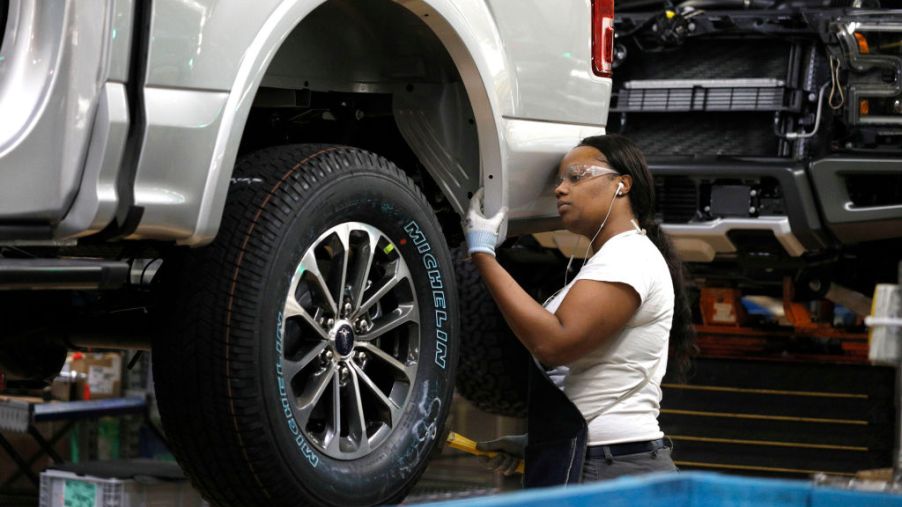
How Long Does It Take to Assemble a Pickup Truck?
Have you ever wondered what it takes to build a Ford F-150? Most drivers don’t know the time and expertise it requires. This makes us wonder if humans are still involved or do robots build F-150s now? Are there extra steps for custom trucks? Now, we have answers thanks to American Trucks.
Where are Ford F-150s built?
Proudly built in Dearborn, Michigan at one of Ford’s many plants known as the Rouge, the Ford F-150 is a true “made in America” product. It currently employs 4,400 employees, according to Ford, and 4,200 of these individuals are hourly employees.
So, yes, humans do still work on the line. While many fear that robots are putting people out of work, Ford has maintained a balance between employing humans and increasing production speed with the help of machines.
How long does it take to build a Ford F-150?
According to Justin Dugan, who hosts American Trucks’ video, it takes approximately 20 hours to build an F-150. Break that down even further, and Ford sends a complete F-150 truck down the line every 53 seconds.
Henry Ford would be shocked and proud at how far his revolutionary assembly line has come. History.com reports, “The workers who built his Model N cars (the Model T’s predecessor) arranged the parts in a row on the floor, put the under-construction auto on skids and dragged it down the line as they worked.”
This process took about 12 hours to create just one car. When Ford perfected the assembly line by using a combination of humans and machines, he reduced the time it took to complete the Model T to two hours and 30 minutes.
While the Model T will always be one of the most influential cars in the world, it didn’t have as much technology as the F-150.
Ford’s process from start to finish
Justin Dugan toured the Rouge plant to see how Ford builds the best-selling truck. Ford begins with the stamping process. Machines take pieces of sheet metal and stamp out the components needed to build the F-150. Once the machines are finished, the pieces are shuffled to the pallet department, where the pieces are assembled.
Body Area Manager Chris Yates explains that the pallet process is essentially the foundation of the F-150. Once the assembled pieces are inspected by machines, the truck is shipped to the paint department. It’s interesting to note that machines inspect over 120 points on the cab in about 40 seconds. If there’s anything remotely questionable, the piece is taken to another area of the plant where humans inspect it.
The next stage of the assembly process is called joining. Rather than welding, Ford uses fastening screws installed by stations. The reason why Ford no longer welds pieces together has to do with its switch to aluminum. Spot welding aluminum requires much more power than fastening the screws, so it was a smart move by Ford.
Riveting is next, which is also part of the joining department. It helps build the structure. If you’re into welding, you’ll be pleased to know that Ford uses laser welding and two human welders both inspect and weld.
If the machines or human inspectors notice something a little off, it’s taken to the laser scanning department where humans examine the parts. The laser is able to pinpoint exactly what’s wrong, so it can be corrected before the truck moves farther down the line. A computer is able to show the root cause of the problem with incredible detail.
After being painted, the wheels, engine components, and truck bed are assembled with the cab. The doors are placed at this point, too. (If they were installed earlier, it would make things awkward for operators to get in and out.) Humans are responsible for attaching the doors, and it’s crucial they get them on before it moves down the line.
The last step is the pre-delivery system where the trucks undergo multiple inspections. They also get started for the first time and the truck is driven to more testing stations. Much of the inspection process is done by touch. The workers work with the trucks so much that they know from sight, touch, and sound that something is wrong.
Custom trucks
So what happens to custom trucks that take a little longer to build? According to Bloomberg, it’s taken off the line to a modification station called the MOD Center. Any additions that make the truck unique, like decals, are placed on before the truck is delivered to its happy owner.


